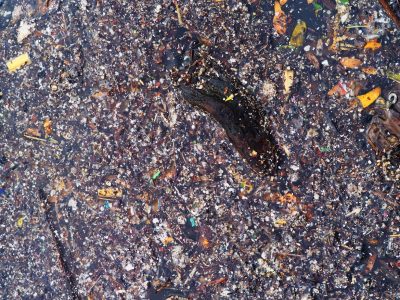Floating microplastics concentrate along large-scale convergence zones associated with Ekman dynamics in the five major ocean basins, but a comprehensive analysis of the spatial and temporal distributions is lacking and the monitoring tools are not well developed to assess global distributions. Through this NASA-funded project Spaceborne Quantification of Ocean MicrO-Plastics (SQOOP), we are conducting a feasibility study of remote detection of surface microplastics, in the context of different surface particle properties and uncertainties in atmospheric correction with multiple, advanced detection techniques including hyperspectral and polarimetric approaches.

Simulations of mixed pixel models of floating biofilmed microplastic reflectance to the Top of the Atmosphere (TOA) have been conducted with varying background water chlorophyll concentrations, atmospheric conditions (e.g., aerosol properties and wind speed) and instrument and solar viewing geometries. Results show that microplastics generally must represent more than 0.01 fractional coverage at the sea surface to be detectable or 100 times more concentrated than measured concentrations in the gyres.
In collaboration with visual artist Oskar Landi, we produced an unconventional and engaging art exhibit to engage the public further in this pressing environmental problem. “Floating Points: Exploring the Plastisphere with NASA” opened November 9, 2023 at the University of Connecticut Avery Point Campus Alexey von Schlippe gallery. News articles: UConnToday2021; UConnToday2023
Collaborators: Heidi Dierssen (UConn), Graham Trolley (UConn), Amir Ibrahim (NASA GSFC), Kirk Knobelspiesse (NASA GSFC), Oskar Landi, Jacik Chowdhary (NASA GISS), M. Ottaviani (NASA GISS), Olivia Pierpaoli (NASA GISS)
Funding: NASA Ocean Biology and Biogeochemistry
Papers related to this: Trolley (2023); Castagna et al. (2023)
Open Source Code on GitHub: Information Content Analysis by Knobelspiesse(2023). RodgersICA